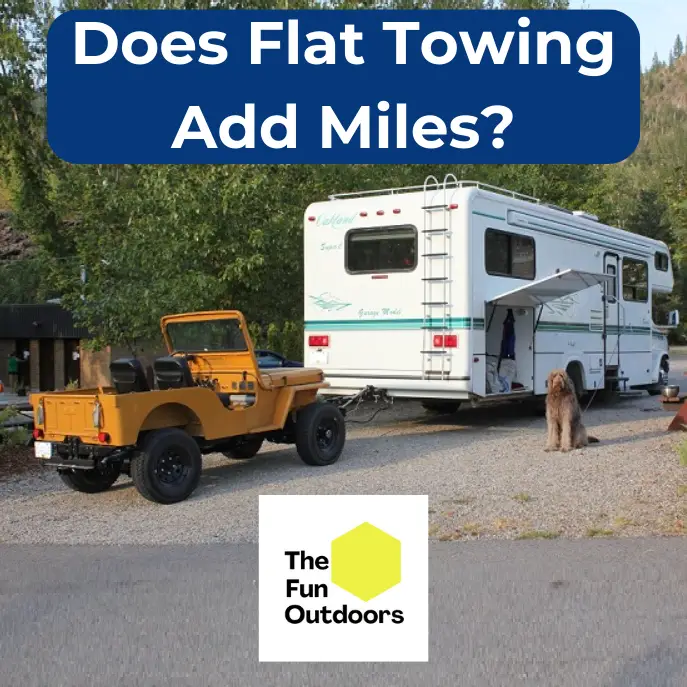If you’re planning to tow your vehicle behind your RV or another vehicle, you may be wondering: does flat towing add miles to your car? It depends on the type of odometer your vehicle has. If you have a mechanical odometer or a rear-wheel drive vehicle, flat towing will add miles to your car’s odometer. If you have a digital odometer, flat towing will not add miles to your car’s odometer.
Quick Facts:
- Flat towing does not add miles to vehicles with a digital odometer.
- Flat towing does add miles to rear-wheel drive vehicles or vehicles with a mechanical odometer.
- Even if flat towing does not add miles to your car’s odometer, it can still cause wear and tear on the vehicle.
- Before deciding to flat tow your vehicle, it’s important to understand the potential damage it can cause and ensure your vehicle is suitable for flat towing.
Understanding Flat Towing
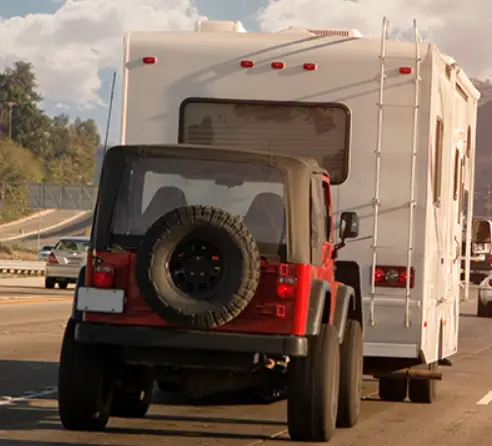
If you’re planning to tow your vehicle behind an RV, you might be wondering if flat towing adds miles to your car. Flat towing, also known as dinghy towing or four-wheel towing, is a popular towing method where all four wheels of the towed vehicle are on the ground.
It is a safe and convenient way to bring your car along on your RV adventures without having to rent a car or drive two separate vehicles.
When flat towing, it is important to put your car in neutral to disengage the transmission. This ensures that the wheels can spin freely without causing any damage to the transmission.
You will also need a tow bar to connect your car to the RV. A tow bar is a device that attaches to both the RV and the towed vehicle, allowing them to move as one unit.
Flat towing is a manual towing method, which means you will need to steer and brake your towed vehicle manually. This can be a bit tricky, especially if you’re new to RV towing.
It is important to practice flat towing in a safe and controlled environment before hitting the open road.
One of the benefits of flat towing is that it does not add miles to most cars’ odometers, as most vehicles come with digital odometers. This is because the wheels are still turning and moving, but the transmission is disengaged, so the odometer is not recording any mileage.
Flat towing can still cause wear and tear on your car’s tires, suspension, and other parts, so it is important to inspect your car before and after each trip.
Does Flat Towing Add Miles?
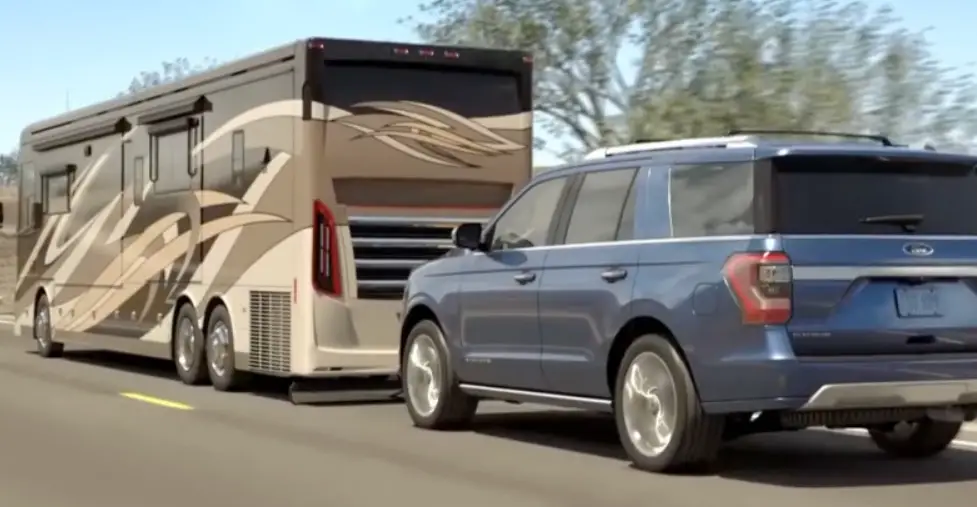
If you’re considering flat towing your car behind your RV, one of the questions you may be asking is whether flat towing adds miles to your car’s odometer. The answer is: it depends. Let’s take a closer look at some of the factors that can affect whether flat towing adds miles to your car.
Rear-Wheel Drive Vehicles
If your car is rear-wheel drive, flat towing may cause your car’s odometer to accumulate miles. This is because the wheels that are being towed are still connected to the drivetrain, which means that the transmission and other components are still turning.
Over time, this can cause wear and tear on these components, which can lead to additional maintenance costs down the road.
Cars with Mechanical Odometers
If your car has a mechanical odometer, flat towing will likely cause the odometer to accumulate miles. This is because mechanical odometers work by counting the number of times the wheels turn. When you flat tow a car, the wheels are still turning, which means that the odometer is still counting.
However, if your car has an electronic odometer, flat towing will not cause the odometer to accumulate miles. This is because electronic odometers work by counting the number of pulses sent by a sensor in the transmission.
When you flat tow a car, the transmission is not turning, which means that the sensor is not sending any pulses to the odometer.
Potential Damage from Flat Towing
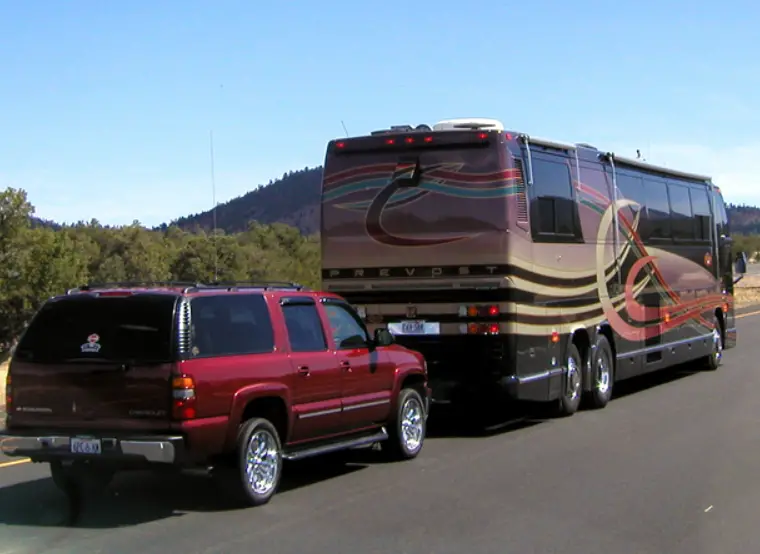
While flat towing can be a convenient way to transport a vehicle, it does come with some potential risks and damages. Here are some things you should consider before flat towing:
Transmission Damage
Flat towing can cause damage to your transmission. The transmission is not being lubricated while the vehicle is being towed, which can lead to mechanical damage. This is especially true for vehicles with rear-wheel drive and transfer cases.
Wear and Tear on Components
Flat towing can cause wear and tear on various components of the vehicle. The gears can wear down, and the braking system can become damaged due to the added weight of the towed vehicle. This can lead to dangerous situations on the road.
Park the Vehicle Properly
When flat towing, it is important to properly park the vehicle before towing. If the vehicle is not properly parked, it can cause major damage to the transmission and other components.
Check the Manufacturer’s Recommendations
Before flat towing, it is important to check the manufacturer’s recommendations for your specific vehicle. Some vehicles are not designed to be flat towed, and doing so can cause serious damage.
Vehicle Types Suitable for Flat Towing
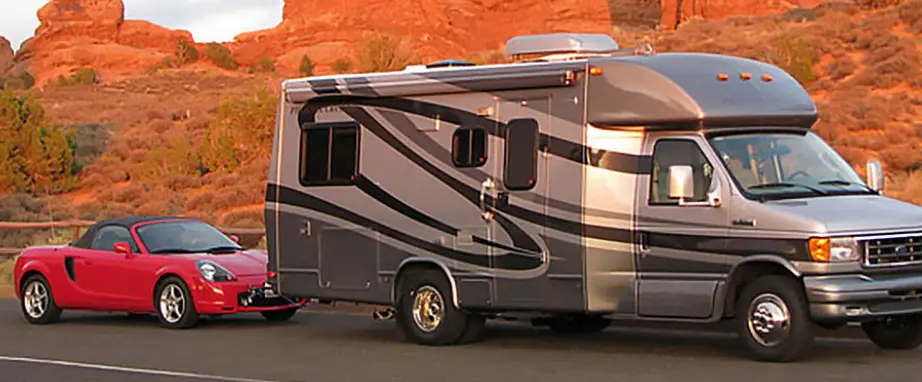
If you’re planning to flat tow your vehicle behind an RV, it is important to know which types of vehicles are suitable for flat towing.
Typically, a car with rear-wheel drive and a manual transmission or four-wheel drive with a manual transfer case that can be placed in neutral can be flat towed.
Checking the owner’s manual is the best way to check if a vehicle is suitable for flat towing.
Jeep vehicles are popular choices for flat towing. The Jeep Wrangler is a great option because it is designed for off-road use and has a manual transfer case that can be easily placed in neutral for flat towing.
The Jeep Grand Cherokee is another good option for flat towing as it has a Quadra-Trac II or Quadra-Drive II transfer case that can be placed in neutral.
All-wheel-drive and front-wheel drive vehicles can also be suitable for flat towing. The Honda CR-V is a popular choice for flat towing because it has a simple procedure to put the car into flat tow mode. The Pontiac Grand Prix, Ford Crown Victoria, and Mercury Grand Marquis are also suitable for flat towing.
It is important to note that not all vehicles are suitable for flat towing, even if they have a manual transmission. Some vehicles have front-wheel drive with a transaxle that cannot be placed in neutral, making them unsuitable for flat towing.
Always check the owner’s manual before attempting to flat tow a vehicle.
See Related: Can A Honda CR-V Be Flat Towed?, and Can You Flat Tow A Jeep Cherokee?
Precautions for Safe Flat Towing
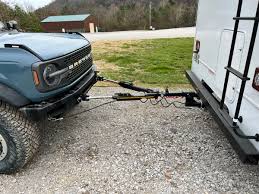
When flat towing a vehicle, there are certain precautions you should take to ensure a safe journey. These precautions include:
1. Check with a Mechanic
Before flat towing your vehicle, it’s important to have a mechanic check it out to make sure it’s in good condition. They can check the tires, ignition, emergency brakes, axle, and other important components to ensure they are functioning properly and won’t cause any issues during the tow.
2. Use the Right Equipment
Using the right equipment is crucial for safe flat towing. Make sure the tow bar and wiring kit are compatible with both the tow vehicle and the towed vehicle. Also, make sure the tow bar is securely attached to both vehicles and that the towed vehicle is properly anchored.
3. Fit the Vehicle for Towing
Not all vehicles are suitable for flat towing. Check your owner’s manual or consult with a mechanic to determine if your vehicle can be flat towed. If it can, make sure it’s properly fitted for towing by following the manufacturer’s guidelines.
4. Secure the Towed Vehicle
Make sure the towed vehicle is securely attached to the tow bar and that all wheels are anchored. This will prevent the vehicle from swaying or coming loose during the tow.
5. Use the Right Fuel
Make sure you’re using the right fuel for your tow vehicle. If you’re using a diesel tow vehicle, make sure you’re using diesel fuel. If you’re using a gas tow vehicle, make sure you’re using gas.
6. Make Necessary Modifications
If your towed vehicle requires any modifications for safe flat towing, make sure they are made before you hit the road. This may include adding a base plate or modifying the steering column.
Remember, flat towing can be a safe and convenient way to transport your vehicle, as long as you take the necessary precautions and follow manufacturer guidelines.
Manufacturer Guidelines and Legal Considerations
When it comes to flat towing, it’s important to follow the manufacturer guidelines and legal considerations. Not all vehicles are designed to be flat towed, so it’s crucial to check the owner’s manual or consult with the dealership to ensure that your vehicle is compatible with flat towing.
In addition to checking the owner’s manual, you should also consider the towing capacity of your RV or motorhome. Make sure that the weight of the towed vehicle does not exceed the towing capacity of your RV or motorhome.
Exceeding the towing capacity can result in damage to your vehicle or RV, as well as increased safety risks on the road.
Another important consideration is the type of transmission your vehicle has. Flat towing is generally not recommended for vehicles with manual transmissions, as it can cause damage to the transmission.
If you have a manual transmission, it’s best to consult with the dealership or a professional mechanic to determine the best towing method for your vehicle.
Battery drain is another common concern when flat towing. Some vehicles may experience battery drain when being flat towed, so it’s important to make sure that your vehicle’s battery is fully charged before hitting the road.
You may also want to consider installing a battery disconnect switch to prevent battery drain during towing.
Finally, it’s important to consider any legal regulations regarding flat towing. Certain vehicles may not be legal to flat tow in certain states or countries, so it’s important to research any legal restrictions before embarking on a flat towing journey.
Overall, following manufacturer guidelines and legal considerations is crucial when it comes to flat towing. By doing your research and taking the necessary precautions, you can ensure a safe and successful flat towing experience.
Alternative Towing Methods To Flat Towing
If flat towing is not an option for you, there are alternative methods for towing your car. Here are some of the most common methods:
Tow Dolly
A tow dolly is a small trailer that lifts the front wheels of your car off the ground while the rear wheels remain on the road. This method is great for cars with front-wheel drive, as it prevents the transmission from being damaged.
Using a tow dolly does add extra weight to your vehicle and can be more difficult to maneuver than flat towing.
Trailer Towing
Trailer towing involves using a trailer hitch to attach a trailer to the back of your RV or vehicle. This method is great for larger vehicles, as it allows you to tow heavier loads.
It can be expensive to purchase and maintain a trailer, and you may need a special license to operate it.
Dinghy Towing
Dinghy towing, also known as “four-down towing,” involves attaching your car directly to your RV or vehicle without the use of a trailer or tow dolly. This method is great for smaller cars, as it is lightweight and easy to maneuver.
Not all cars are suitable for dinghy towing, so be sure to check your owner’s manual before attempting this method..
Frequently Asked Questions
What Are The Best SUVs For Flat Towing Behind An RV?
When it comes to flat towing, not all vehicles are created equal. If you’re in the market for an SUV that you can tow behind your RV, there are a few things to keep in mind.
First, you’ll want to make sure that the vehicle is approved for flat towing by the manufacturer. Some popular SUVs that are approved for flat towing include the Jeep Wrangler, Chevrolet Equinox, and Ford Edge
It’s always best to check with the manufacturer to make sure that you’re following their guidelines and not risking damage to your vehicle.
Can Flat Towing Cause Damage To A Car’s Transmission?
Flat towing can cause damage to a car’s transmission if it’s not done properly. The transmission is designed to be lubricated by the engine’s oil pump, which isn’t running when the car is being towed.
This can cause the transmission to overheat and wear out faster than it would under normal driving conditions. To avoid this, it’s important to follow the manufacturer’s guidelines for flat towing and use the proper equipment, such as a tow bar and base plate.
It’s also a good idea to periodically stop and run the engine to circulate the transmission fluid and prevent overheating.

